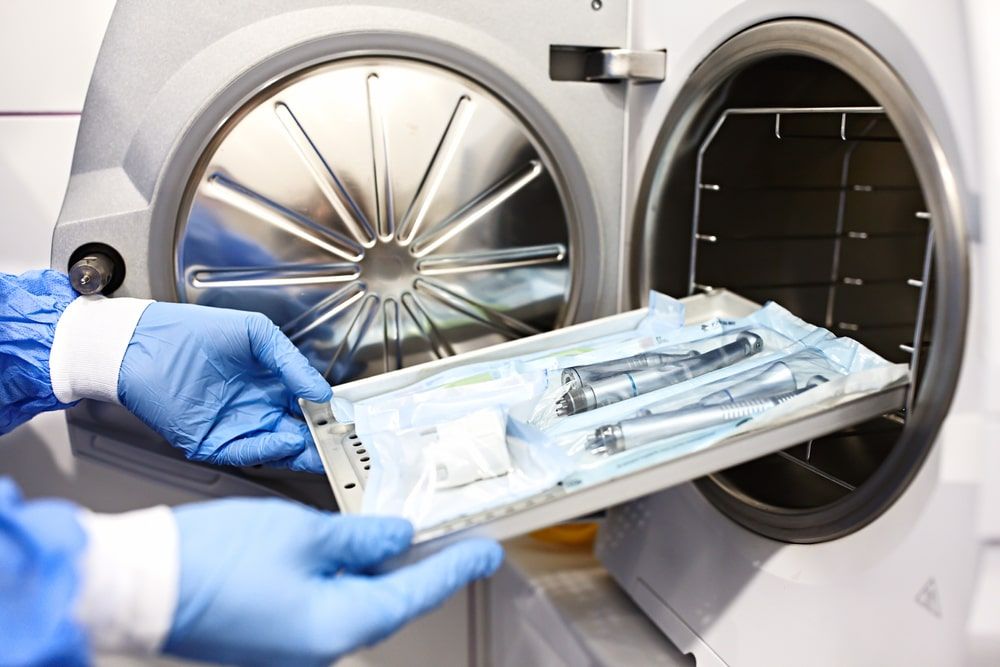In recent years, cosmetic dentistry has soared in popularity, offering individuals a path to a brighter, more confident smile. However, as we embrace these advancements, it’s essential to consider the environmental footprint of the materials used in these procedures. From amalgam fillings to composite resins and ceramics, the production, use, and disposal of dental materials can have significant ecological implications. This blog explores the environmental impact of various dental materials, shedding light on sustainable alternatives and practices that can help reduce our ecological footprint while maintaining the highest standards of dental care.
In This Blog:
- Types of Dental Materials in Cosmetic Dentistry
- Environmental Impact of Different Dental Materials
- Sustainable Alternatives in Cosmetic Dentistry
Types of Dental Materials Used in Cosmetic Dentistry
Cosmetic dentistry relies on a variety of materials to restore and enhance the appearance of teeth. Each material offers distinct advantages, tailored to different cosmetic needs, but they also come with their own environmental considerations. Here’s an overview of the most commonly used dental materials in cosmetic procedures:
Amalgam
Amalgam, a traditional material for dental fillings, is an alloy containing mercury, silver, tin, and copper. While it is known for its durability and cost-effectiveness, its use has declined in cosmetic dentistry due to aesthetic concerns and environmental issues related to mercury.
Composite Resins
Composite resins are a popular choice for fillings, veneers, and bonding due to their ability to closely match the natural color of teeth. Made from a mixture of plastic and fine glass particles, composite resins are versatile and aesthetically pleasing. However, the production of these materials involves chemical processes that can have environmental repercussions.
Ceramics
Ceramics, including porcelain and zirconia, are widely used in cosmetic dentistry for crowns, veneers, inlays, and onlays. They offer a natural tooth-like appearance and excellent durability. Natural ceramics are mined, while synthetic ceramics are manufactured, both processes carrying different environmental impacts. Ceramics are generally non-biodegradable, posing challenges for disposal and recycling.
Metals
Various metals, such as gold, titanium, and palladium, are used in dental restorations like crowns, bridges, and implants. Gold has long been prized for its biocompatibility and longevity, while titanium is favored for its strength and compatibility with bone for implants. The extraction and processing of these metals can be environmentally intensive, involving significant energy use and waste production.
Understanding the types of materials used in cosmetic dentistry and their specific applications helps to highlight the broader environmental impacts associated with their use. In the following sections, we will delve deeper into these impacts and explore sustainable alternatives and practices.
Environmental Impact of Different Dental Materials
The environmental impact of dental materials extends from their extraction and production to their use and disposal. Each material has a unique footprint, which is crucial to understand in order to mitigate negative ecological effects. Here’s a closer look at the environmental concerns associated with common dental materials:
Amalgam
Amalgam contains mercury, which poses significant environmental risks. Mercury pollution can occur during the disposal of amalgam waste, leading to contamination of water sources and harm to aquatic life. Additionally, improper disposal methods in dental offices can result in mercury entering the sewage system. Regulations such as the Minamata Convention aim to control mercury emissions and manage waste, but challenges remain in ensuring compliance and proper disposal practices.
Composite Resins
Composite resins are primarily composed of plastic and fine glass particles. The production process involves the use of petrochemicals, contributing to the overall carbon footprint. Additionally, these materials are not biodegradable, leading to long-term environmental persistence. The curing process of composites also releases volatile organic compounds (VOCs) into the atmosphere, contributing to air pollution.
Ceramics
Ceramics, including porcelain and zirconia, are prized for their durability and aesthetic qualities. However, their environmental impact varies depending on whether they are naturally mined or synthetically produced. Mining natural ceramics can lead to habitat destruction and significant energy consumption. Synthetic ceramics, while reducing some mining impacts, require substantial energy and resource input for their production. Disposal of ceramics poses challenges due to their non-biodegradable nature, making recycling and waste management essential concerns.
Metals
The environmental impact of metals like gold, titanium, and palladium used in dental restorations is substantial. The extraction process for these metals often involves open-pit mining, which can lead to deforestation, soil erosion, and contamination of water sources with heavy metals. Refining and processing metals are energy-intensive, contributing to greenhouse gas emissions. While metals can be recycled, the process is complex and not always efficiently managed within the dental industry.
Understanding these impacts highlights the need for sustainable practices in cosmetic dentistry. In the next section, we will explore alternative materials and eco-friendly practices that can help reduce the environmental footprint of dental care.
Sustainable Alternatives in Cosmetic Dentistry
As awareness of the environmental impact of dental materials grows, the search for sustainable alternatives and eco-friendly practices in cosmetic dentistry becomes increasingly important. Here are some innovative solutions and practices that can help reduce the ecological footprint of dental care:
Biocompatible and Eco-friendly Materials
- Bioactive Glass: This material not only matches the aesthetic qualities of natural teeth but also promotes the healing of dental tissues. It releases ions that encourage remineralization and has a lower environmental impact compared to traditional materials.
- Resin-modified Glass Ionomers: These materials are less dependent on petrochemicals and can be more easily recycled. They also release fluoride, which helps in preventing cavities and reducing the need for future dental work.
- Ceramic Alternatives: Research is ongoing into developing ceramics that require less energy to produce or that are made from more sustainable sources. Some companies are exploring the use of recycled ceramics in dental applications.
Recycling and Reuse of Dental Materials
- Recycling Programs: Some dental practices have started to participate in recycling programs for dental materials. For instance, amalgam separators can capture mercury before it enters the sewage system, and specialized companies can recycle these materials safely.
- Reusable Components: The use of reusable components in dental procedures, such as certain types of implant components or orthodontic materials, can reduce waste and the demand for new materials. Innovations in sterilization and material science are making this more feasible.
Green Dentistry Practices
- Energy-efficient Equipment: Dental offices can significantly reduce their environmental impact by using energy-efficient equipment. This includes LED operatory lights, digital X-ray machines, and energy-saving autoclaves.
- Water Conservation: Implementing water-saving devices and practices can help reduce water usage in dental offices. For example, using dry vacuum systems instead of traditional wet vacuum systems can save thousands of gallons of water annually.
- Digital Dentistry: Digital impressions and records reduce the need for physical materials and chemicals used in traditional impression techniques. This not only decreases waste but also enhances precision and patient comfort.
Sustainable Office Practices
- Eco-friendly Office Supplies: Using recycled paper products, biodegradable cleaning supplies, and eco-friendly packaging materials can contribute to a greener dental practice.
- Waste Reduction: Implementing a comprehensive waste management plan, including proper segregation of hazardous and non-hazardous waste, can minimize the environmental impact. Encouraging patients to bring reusable containers for oral hygiene products can also help reduce plastic waste.
By adopting these sustainable alternatives and practices, dental professionals can play a crucial role in reducing the environmental impact of cosmetic dentistry. These efforts not only benefit the planet but also promote a healthier, more responsible approach to dental care.
Conclusion
As we advance in the field of cosmetic dentistry, it is crucial to recognize and address the environmental implications of the materials and practices we employ. By understanding the ecological footprint of traditional dental materials and embracing sustainable alternatives, dental professionals can significantly reduce their environmental impact. Eco-friendly practices, such as using biocompatible materials, recycling programs, and energy-efficient equipment, are steps in the right direction toward a greener future. Patients, too, can play a role by being informed and choosing environmentally conscious options. Together, we can ensure that the pursuit of a perfect smile does not come at the expense of our planet’s health. Let’s commit to a sustainable approach in cosmetic dentistry, fostering both oral health and environmental stewardship.
Dr. Edward Camacho earned his DDS from the University of Texas Health Science Center. He believes in continuing his education and training and that a dentist’s education should never cease. As a result, he has received extensive training in aesthetic dentistry, restorative dentistry, dental implant placement, orthodontics, computerized dentistry, and laser dentistry. Dr. Camacho’s continued education and completed cosmetic procedures has helped him establish himself as one of San Antonio’s leading cosmetic dentists. He has completed thousands of cosmetic procedures over the span of his 40 year career.







